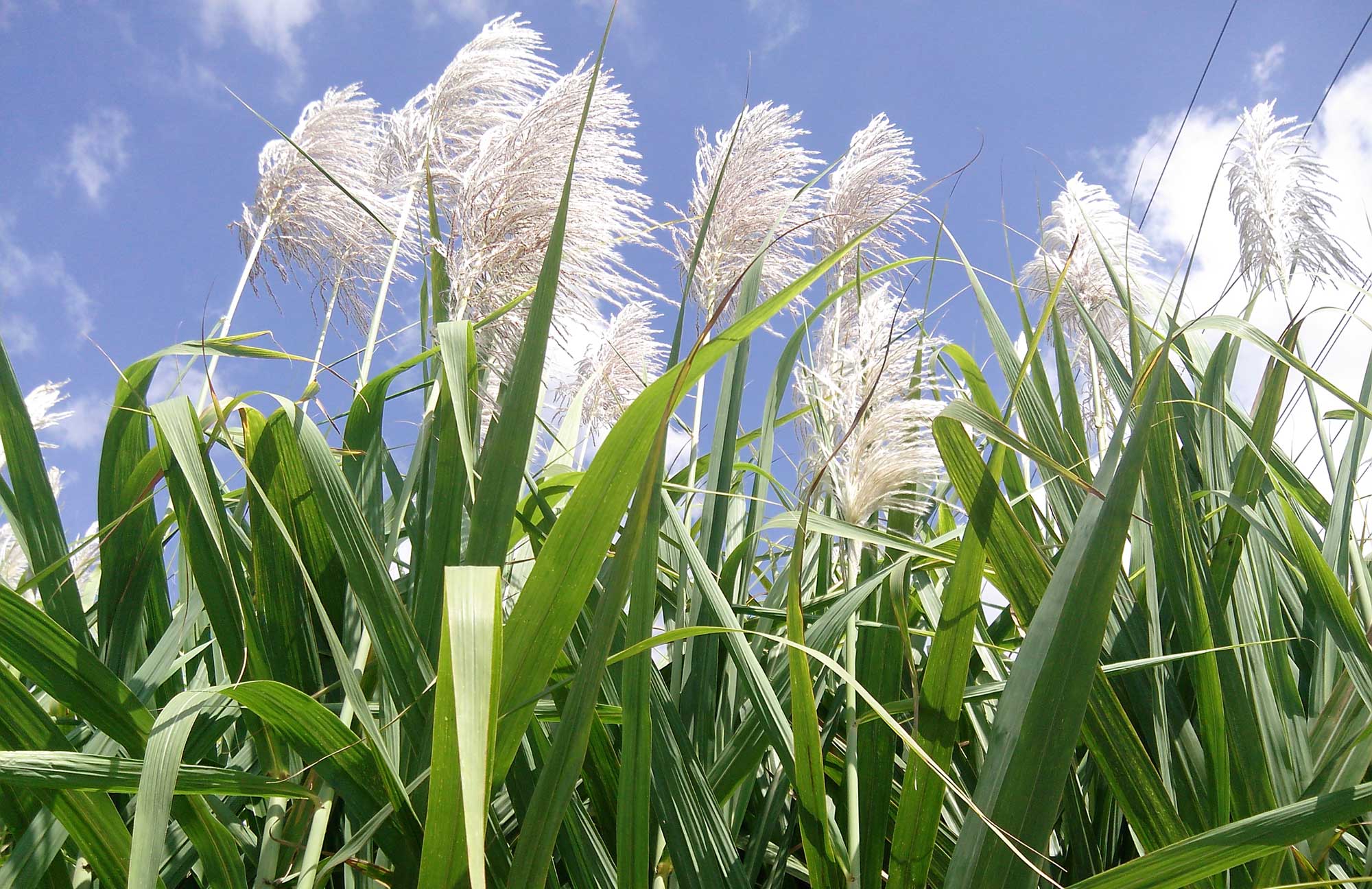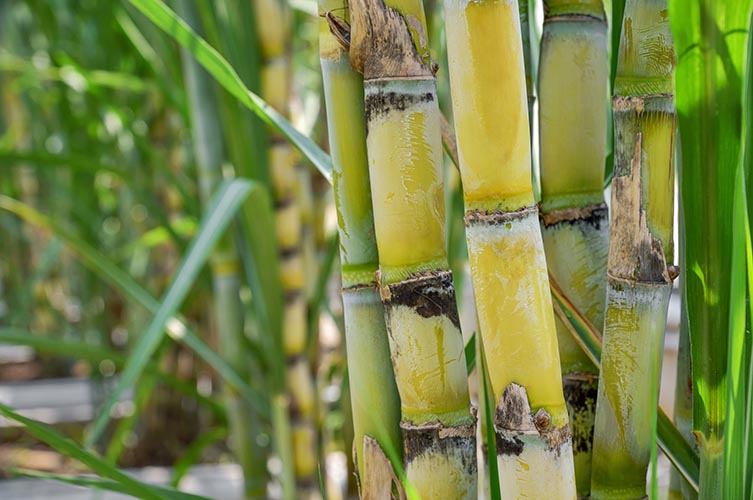Everything About Sugar Canes: What Are Sugar Canes Utilized For and Their Duty in Worldwide Farming?
Sugar canes offer as a foundation of global agriculture, primarily recognized for their role in sugar manufacturing. They additionally add to the development of by-products like molasses and ethanol. These facets not only support different markets but likewise effect economic security in country areas. However, the cultivation of sugar walking sticks faces substantial ecological obstacles. Understanding their diverse role prompts more expedition into their farming practices and sustainability initiatives.
The Agricultural Process of Sugar Cane Farming
Sugar walking cane cultivation may vary by area, the basic farming procedure continues to be consistent. The initial step involves picking high-yielding selections ideal for regional environments. Prep work of the dirt is crucial, typically requiring husbandry and the enhancement of plant foods to improve fertility. Growing usually takes place during the wet period, with farmers using either whole stalks or cuttings to develop brand-new crops.As the plants grow, they need attentive care, including weed control, insect administration, and watering, relying on the ecological conditions. Farmers keep an eye on the sugar walking cane's development cycle, which generally extends 10 to 24 months, before harvesting. Harvesting is labor-intensive, commonly performed by hand or with specialized equipment, guaranteeing very little damage to the stalks. Complying with harvest, the walking stick is delivered to refining centers. This thorough growing process not only supports local economic climates however likewise plays a considerable function in global agricultural techniques, adding to food and energy supplies.
Sugar Production: From Walking Stick to Crystal
The trip of sugar manufacturing begins the minute newly collected sugar walking stick comes to refining centers. The initial step entails cutting the cane and cleaning to prepare it for removal. Utilizing high-pressure rollers, the juice is extracted from the smashed walking stick, resulting in a pleasant fluid referred to as sugarcane juice. This juice undergoes explanation, where pollutants are removed via the enhancement of lime and heat.Next, the made clear juice is concentrated by steaming it down to develop a thick syrup. This syrup is then crystallized by cooling down, allowing sugar crystals to form. The taken shape sugar is separated from the remaining syrup, called molasses, through centrifugation.Finally, the sugar crystals are cleaned and dried out, resulting in the acquainted granulated sugar (What Are Sugar Canes Used For). This procedure changes raw sugar walking cane right into an item that is indispensable to various cooking and industrial applications, highlighting the value of sugar in international agriculture
Biofuels and Sugar Canes: A Lasting Future
As the world significantly seeks sustainable power solutions, sugar canes have actually arised as an appealing resource for biofuels. The biomass derived from sugar walking sticks can be exchanged ethanol, an eco-friendly gas option that substantially decreases greenhouse gas exhausts compared to fossil fuels. This procedure not just supplies a cleaner power resource but likewise advertises energy self-reliance for many countries.In addition, sugar walking stick farming supports country economic situations by creating work in both farming and biofuel production sectors. Using sugar walking canes for biofuel production additionally urges farming diversity, which can enhance soil wellness and decrease dependence on single plants. Additionally, the by-products of sugar cane handling can be made use of for electrical power generation, additionally contributing to a sustainable energy cycle. As nations endeavor to fulfill renewable resource targets, sugar walking sticks are positioned to play a crucial role fit a more sustainable future in the biofuel landscape.

The Duty of Sugar Canes in Drink Manufacturing
Sugar walking canes play a substantial function in beverage manufacturing, functioning as a key active ingredient in rum and adding to the sweet taste of numerous sodas. In addition, their all-natural juices are utilized in different beverages, boosting taste and appeal. This versatility emphasizes the significance of sugar walking sticks in the global drink sector.
Sugar Walking Cane in Rum
Rum production is delicately connected to the cultivation of sugar walking stick, a necessary plant that supplies the necessary fermentable sugars needed for fermentation. This procedure begins with the removal of juice from collected sugar walking sticks, which is after that either fermented directly or processed right into molasses. Yeast is included in transform the sugars right into alcohol, causing a diverse series of rum designs, from light to dark varieties. The geographical area where the sugar cane is expanded greatly influences the flavor account of the rum, with elements such as dirt kind and climate playing vital duties. Nations like Barbados, Jamaica, and Cuba are renowned for their rum production, showing the cultural and historic value of sugar walking cane within the international beverage market.
Soft Drinks Sweetener Source

Natural Juice Manufacturing Uses
Along with its considerable duty in soda production, sugar cane is also essential in the all-natural juice market. The juice removed from sugar walking stick, known as walking stick juice, is celebrated for its natural sweet taste and distinct taste profile. This juice is generally consumed fresh in different areas, particularly in exotic nations, where it is delighted in as a renewing drink. Additionally, walking stick juice offers as a base ingredient in a variety of all-natural fruit juices and shakes, improving both taste and nutritional worth. Its all-natural properties make it an appealing choice to sweetening agents, interesting health-conscious consumers. In general, sugar walking stick's convenience in juice production underscores its value in modern-day drink offerings worldwide.
Technologies in Sugar Cane Byproducts
Developments in sugar walking cane results are leading the way for lasting solutions in various sectors. Biofuels originated from sugar walking stick supply an alternate energy source, while innovations in lasting product packaging are minimizing dependence on traditional materials. These developments highlight the flexibility and navigate here potential of sugar cane past its key usage in drink production.
Biofuels From Sugar Cane
Exactly how can the by-products of sugar cane add to lasting energy solutions? The conversion of sugar walking cane right into biofuels provides an encouraging avenue for renewable energy. By making use of the coarse deposit, known as bagasse, producers can generate bioethanol through fermentation processes. This bioethanol can act as a sustainable option to nonrenewable fuel sources, minimizing greenhouse gas exhausts and dependence on non-renewable sources. In addition, molasses, one more by-product, can be fermented to generate biofuels, taking full advantage of source efficiency. The power produced from sugar cane not just supplies a cleaner fuel resource but likewise enhances the general financial viability of sugar production. By incorporating biofuel production right into their operations, sugar walking stick sectors can play a crucial role ahead of time sustainable energy remedies internationally.
Sustainable Product Packaging Solutions
Lasting packaging remedies are progressively being developed from sugar walking cane by-products, showcasing the versatility of this agricultural staple. Advancements such as naturally degradable plastics obtained from bagasse, the coarse deposit left after juice extraction, are acquiring grip. These products offer an environment-friendly alternative to conventional plastics, reducing dependence on nonrenewable fuel sources and decreasing carbon impacts. Furthermore, sugar cane-based packaging is compostable, damaging down normally without damaging the setting. Companies are now exploring these alternatives to align with consumer demand for sustainability. As awareness of plastic pollution grows, the adoption of sugar cane-derived packaging is expected to climb, placing sugar canes as a crucial player in the shift to greener packaging services in various industries.
Economic Effect of Sugar Walking Stick Farming

Although sugar walking cane farming has deep origins in lots of economic situations, its economic influence expands much past farming production. This crop functions as a substantial income for countless farmers worldwide, particularly in creating nations where agriculture is a key source of income. Sugar walking stick contributes to neighborhood economic situations through work development in harvesting, cultivation, and processing. The industry additionally boosts development in relevant industries such as transportation, devices production, and food processing.Furthermore, sugar cane is a principal in global profession, affecting global markets and rates. Countries that create sugar walking cane usually count on exports to boost their economic stability. The spin-offs of sugar cane, such as ethanol and molasses, expand profits streams for farmers and add worth to the farming industry. On the whole, the economic go right here implications of sugar cane farming are profound, affecting not only farmers yet additionally entire areas and nationwide economic climates.
Ecological Considerations in Sugar Cane Growing
While sugar cane farming plays a vital duty in numerous economies, it likewise increases substantial ecological worries that can not be ignored. The comprehensive use plant foods and pesticides in sugar cane farming often brings about soil destruction and water contamination. Overflow from these chemicals can pollute neighboring water bodies, damaging aquatic ecological communities. In addition, the monoculture practices common in sugar walking cane farming decrease biodiversity, making ecosystems extra vulnerable to parasites and diseases.Deforestation is another important concern, as land is commonly removed to make way for sugar ranches, bring about environment loss for wild animals and enhanced carbon exhausts. Furthermore, the high water consumption required for sugar walking stick irrigation can stress neighborhood water sources, especially in arid regions. As global demand for sugar remains to rise, resolving these ecological difficulties becomes imperative to ensure sustainable methods in sugar walking cane farming.
Frequently Asked Questions
What Are the Nutritional Perks of Sugar Cane?
The nutritional benefits of sugar walking stick mostly include its high carb web find this content, giving power. In addition, it includes vitamins, minerals, and antioxidants that may support general health and wellness, though moderation is crucial as a result of its sugar web content.
Just How Does Sugar Cane Affect Local Ecosystems?
Sugar walking stick growing can substantially influence neighborhood ecosystems by altering land usage, affecting biodiversity, and requiring substantial water sources. In addition, it may result in soil degradation and chemical overflow, interrupting surrounding habitats and wildlife populations.
What Is the Background of Sugar Cane Cultivation?

Exist Alternatives to Sugar Walking Stick for Sugar Production?
Alternatives to sugar walking stick for sugar manufacturing include sugar beetroots, corn, and different exotic plants like sorghum and agave (What Are Sugar Canes Used For). These crops offer varied sources of sweet taste, each with distinctive farming needs and ecological influences
Just How Do Climate Patterns Influence Sugar Walking Cane Returns?
Weather patterns greatly influence sugar walking stick yields via temperature variations, rainfall amounts, and seasonal cycles. Dry spell or excessive rainfall can impede development, while optimal conditions boost photosynthesis, inevitably influencing the amount and quality of the harvest. The journey of sugar manufacturing begins the moment fresh collected sugar walking cane gets here at processing facilities. The crystallized sugar is separated from the remaining syrup, recognized as molasses, with centrifugation.Finally, the sugar crystals are cleaned and dried, resulting in the familiar granulated sugar. Rum manufacturing is intricately connected to the farming of sugar cane, a vital crop that offers the essential fermentable sugars required for fermentation. Furthermore, the monoculture techniques common in sugar walking stick farming decrease biodiversity, making ecological communities extra susceptible to bugs and diseases.Deforestation is an additional critical problem, as land is usually removed to make way for sugar plantations, leading to habitat loss for wildlife and boosted carbon exhausts. Alternatives to sugar walking stick for sugar manufacturing consist of sugar beetroots, corn, and different exotic plants like sorghum and agave.